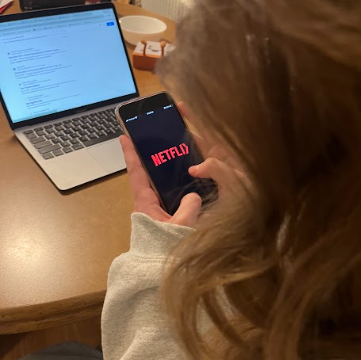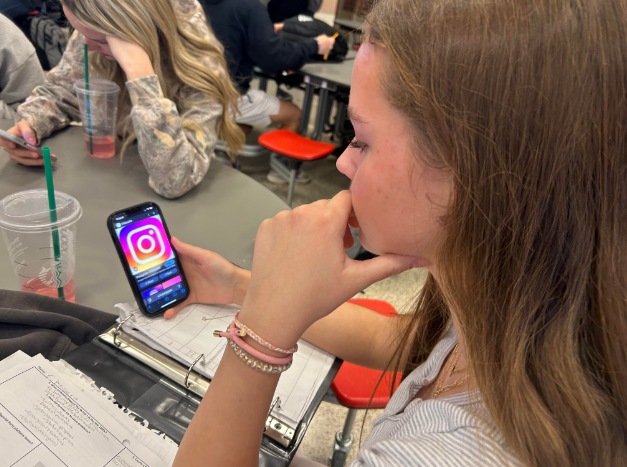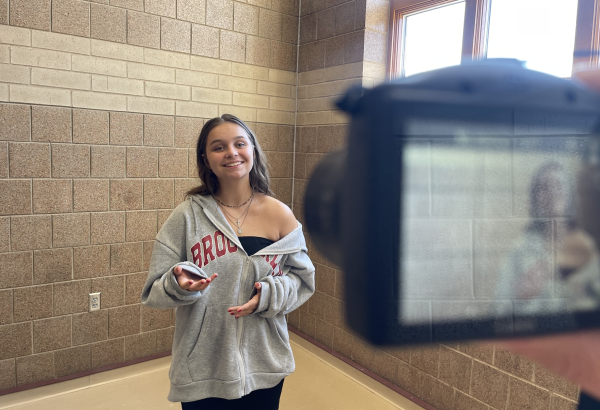From the compact and tangible DVD to the never-ending media void of Netflix, how people get their media intake has changed dramatically. The history of streaming services is a story of technological innovation, ever-changing consumerism and the never-ending impact on the entertainment industry. From the early days of dial-up internet to the lightning-speed connectivity of today, streaming services have reshaped how people consume and experience content.
The evolution from VHS to contemporary streaming platforms like Netflix represents a shift in the way audiences consume visual content. In the era of VHS, viewers experienced the physical feeling of inserting tapes into clunky cassette players, dealing with rewind delays and very limited viewing options. The dawn of DVDs brought in quality and convenience, with sharper images and easily navigable menus.
“I grew up in St. Cloud and there was a video store in our backyard where we would walk to pick out new movies, later when I met Mrs. Steil we would go to Blockbuster to do the same thing,” Brian Steil said, “Then when Netflix came and we paid a monthly amount to get DVDs delivered to our house and now it’s the platform I stream the most.”
In the mid-2000s, Netflix entered the scene as a DVD rental-by-mail service, disrupting the traditional video rental market. However, the company’s true game-changer came in 2007 when it introduced its streaming service, allowing subscribers to instantly watch a vast library of movies and TV shows online.
Originally, the concept of streaming began to take shape in the late 1990s and early 2000s when the internet became more accessible and bandwidth capabilities improved. YouTube, launched in 2005, marked a significant milestone by providing a platform for user-generated content. This not only democratized content creation, but also laid the groundwork for the streaming revolution that was about to unfold.
The emergence of streaming services, epitomized by Netflix, revolutionized the streaming business. Netflix not only eliminated the need for physical media, but introduced a never-ending library of content accessible on demand. The transition from scheduled programming to the freedom to choose what to watch on your own time clearly shows what a shift there has been in viewer autonomy, with audiences now empowered to curate their entertainment experiences in a personalized and flexible manner. This evolution signifies not just a change in technology, but a cultural transformation, marking the end of tangible formats and the rise of a digital era where content is king, and accessibility is paramount.
“I pay attention to what movies are out. I listen to movie podcasts. I like movies a lot,” physics teacher Christopher Mentz explained, “A lot of the movies I like are from the 80s… I like looking back on that era and now that they have kind of incorporated my childhood into shows like Stranger Things it’s been a blast for me.”
This shift from physical DVDs to digital streaming began a new era. Netflix invested heavily in original content, producing critically acclaimed series like “House of Cards” and “Orange Is the New Black.” The success of these shows propelled Netflix to the forefront of the streaming industry.
“Netflix is my favorite place to stream my favorite movies and shows like ‘Stranger Things’ and ‘Back to the Future,” senior Kaitlyn Ginkel said.
As the streaming world expanded, so did the competition. Amazon Prime Video, Hulu, and later, Disney+, Apple TV+, and others entered the market, each offering a unique selection of content and original productions. This variety of services diversified consumer choices and intensified the “streaming wars” as companies vied for subscriber attention.
Streaming services played a pivotal role in the rise of cord-cutting, a trend where consumers abandoned traditional cable and satellite television in favor of internet-based streaming. The flexibility and on-demand nature of streaming appealed to audiences seeking personalized and convenient viewing experiences.
The evolution of streaming extended beyond on-demand content to include live streaming. Platforms like Twitch and YouTube Live transformed how people engage with gaming, live events, and user-generated content.
As the world looks ahead, the future of streaming services seems boundless. The industry continues to innovate with advancements in technology such as 4K and HDR streaming, interactive content, and augmented reality experiences. The global reach of streaming services, coupled with the proliferation of smart devices, ensures that the way people consume entertainment will remain in a state of perpetual transformation.
















Gibby Strub • Feb 6, 2024 at 8:04 am
Growing up in an era where to watch a movie I just have to turn the tv on and search it up seems normal, but back 20 years from now that must have been unimaginable. I feel spoiled thinking about how much of a hassle it must have been to drive to a movie store or put a VHS in and try to get it to work.